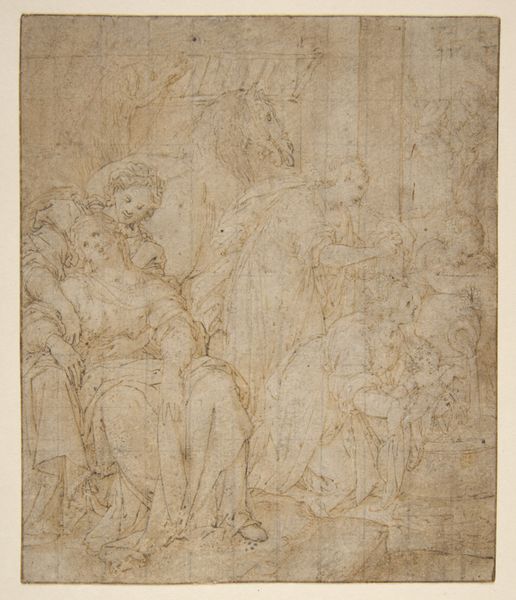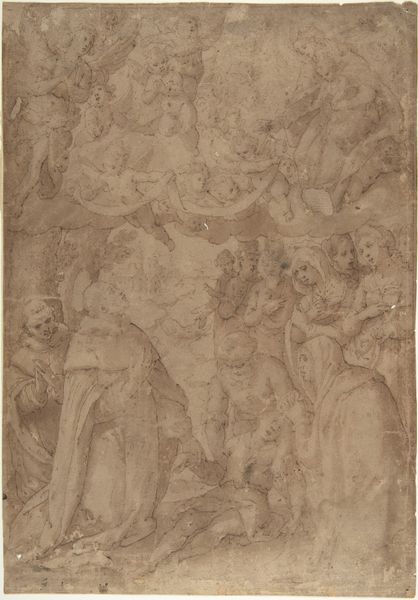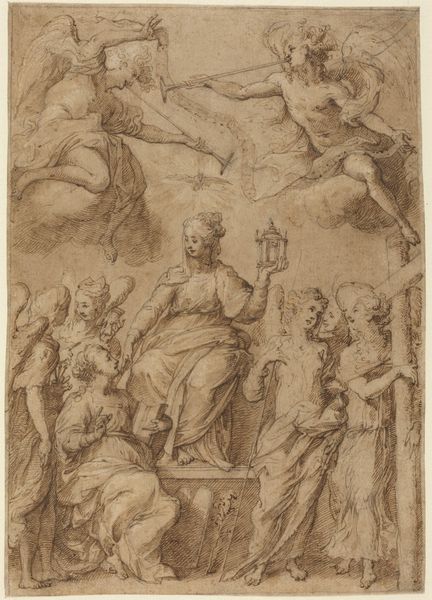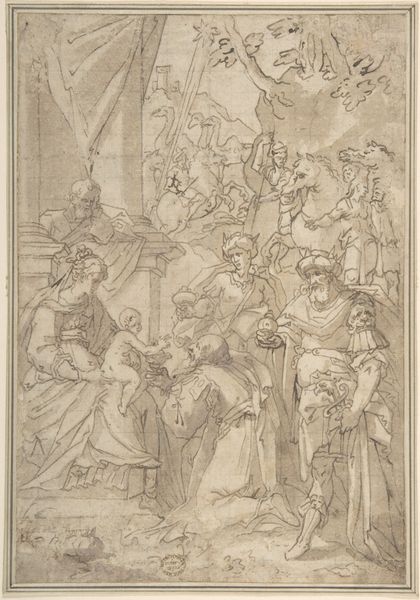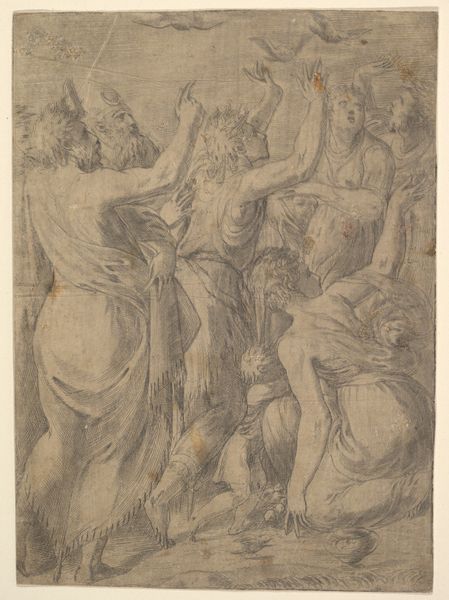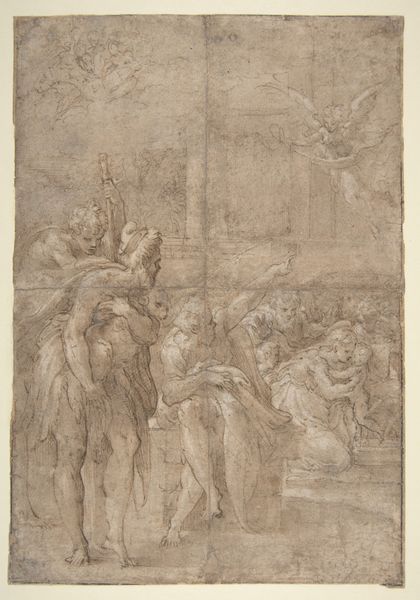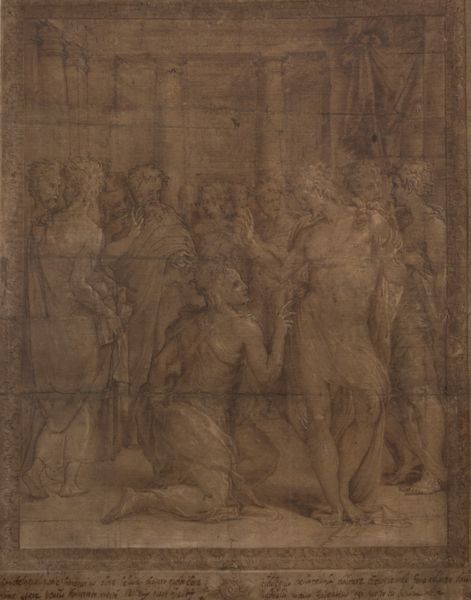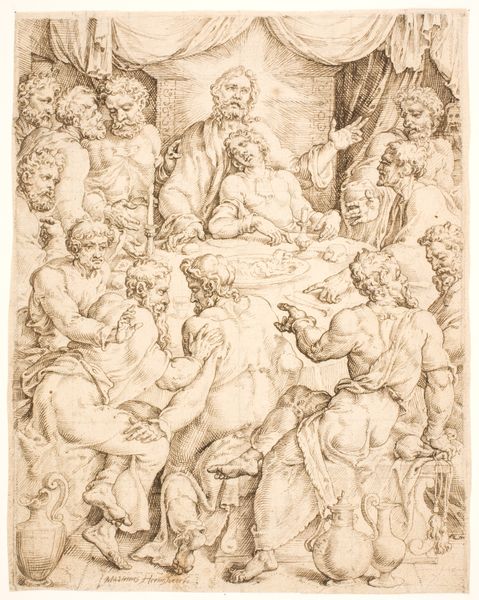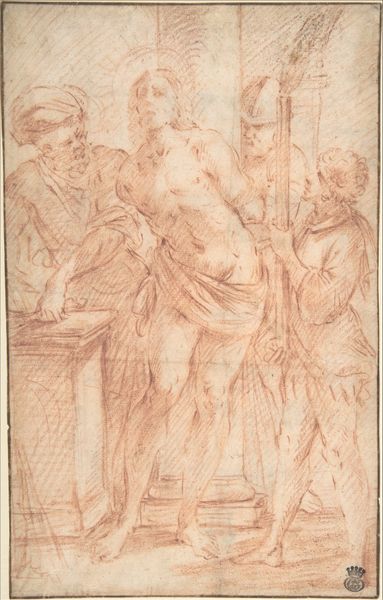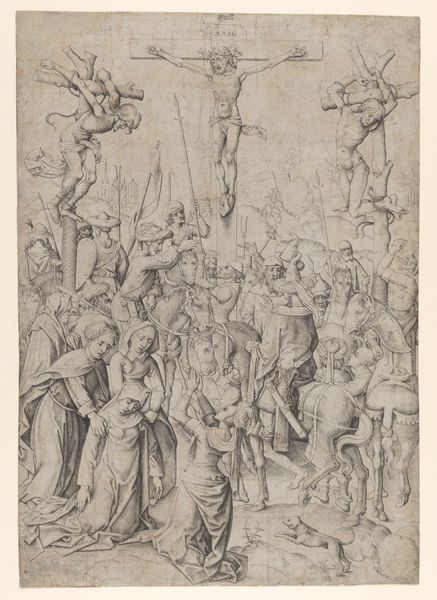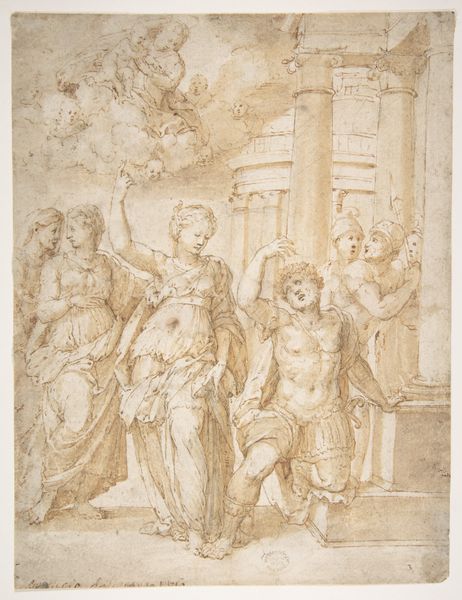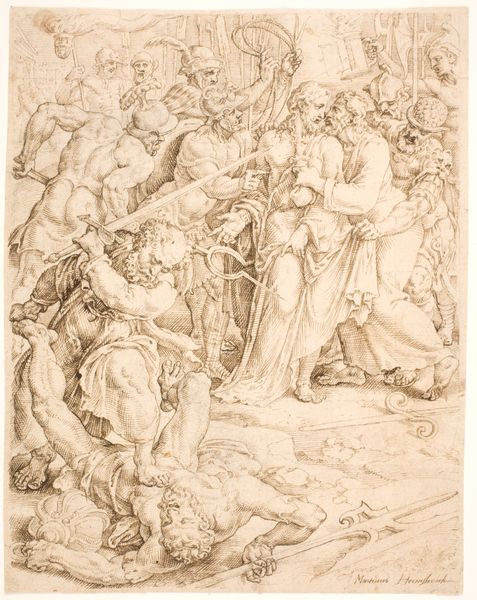
Saint Cecilia, Saint Mary Magdalen, Saint Catherine of Alexandria, and Saint Agnes, Angels with Palm Branches and Crowns Above (recto); Sketches of Three Standing Figures and Arithmetic Calculations (verso) 1604 - 1614
0:00
0:00
drawing, print, paper, ink, pen
#
portrait
#
drawing
#
toned paper
#
ink painting
# print
#
charcoal drawing
#
figuration
#
paper
#
11_renaissance
#
ink
#
pen
#
angel
Dimensions: 15 1/16 × 10 1/2 in. (38.3 × 26.7 cm)
Copyright: Public Domain
Editor: This drawing by Panfilo Nuvolone, "Saint Cecilia, Saint Mary Magdalen, Saint Catherine of Alexandria, and Saint Agnes, Angels with Palm Branches and Crowns Above", done between 1604 and 1614 using pen and ink on toned paper, features a group of female saints. I'm struck by the somewhat unfinished quality and how it allows you to see the artist's process. How do you interpret the representation of these female saints in this drawing, considering its historical context? Curator: Considering this work's historical context is essential. During the Counter-Reformation, the Catholic Church emphasized the importance of female saints as models of piety and virtue. Nuvolone's depiction, with the angels above and the palm branches as symbols of victory, clearly aligns with this effort. What interests me is thinking about these women less as religious icons and more as symbols for their communities, each speaking to different facets of gender, power, and societal expectations. Do you notice anything about how they are positioned or what they carry that hints at their symbolic meanings? Editor: Yes, I see that each saint has different objects like Saint Catherine with her wheel. It’s almost as if these attributes reinforce specific roles and expectations of women within society, even today. The angels overhead seem to legitimize this order. Curator: Exactly! The presence of the angels emphasizes divine endorsement, subtly reinforcing the social and religious norms these saints embodied. But let's also consider this piece's function. Given it’s a drawing, likely preparatory, how might the artist's intentions influence how we read these symbols? Could the “unfinished” quality suggest a work still in negotiation, perhaps reflecting evolving societal attitudes towards female figures, rather than just fixed ideals? Editor: That's a compelling perspective. Perhaps it’s a glimpse into the artist's own questioning of these norms or, at least, a negotiation of them in his art. Curator: Precisely. And by understanding that, we're able to contextualize it and reflect on what meaning these female figures would hold in their time. Editor: It makes you think about the ongoing power of these images and how they reflect both historical values and the potential to subvert those values.
Comments
No comments
Be the first to comment and join the conversation on the ultimate creative platform.
